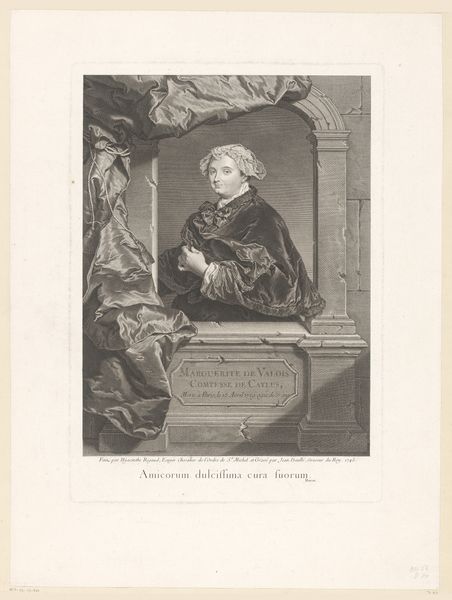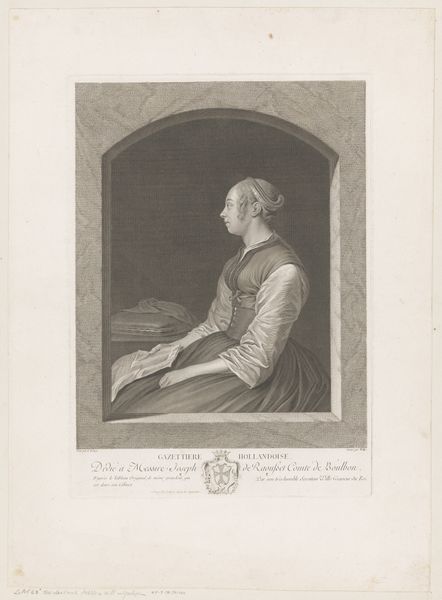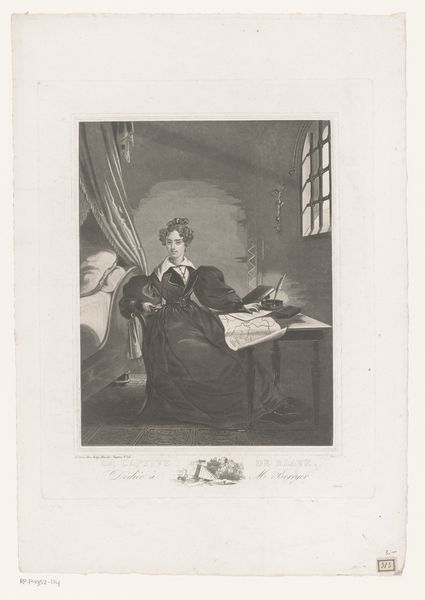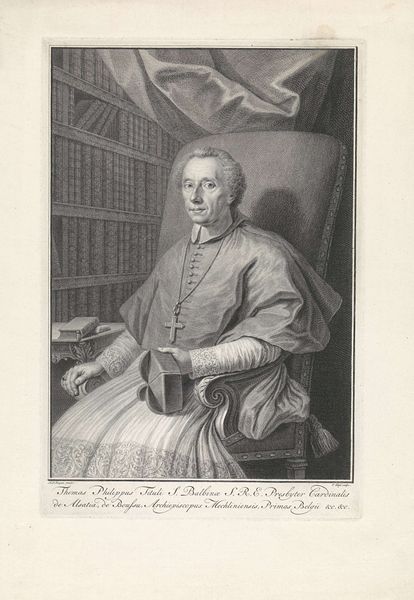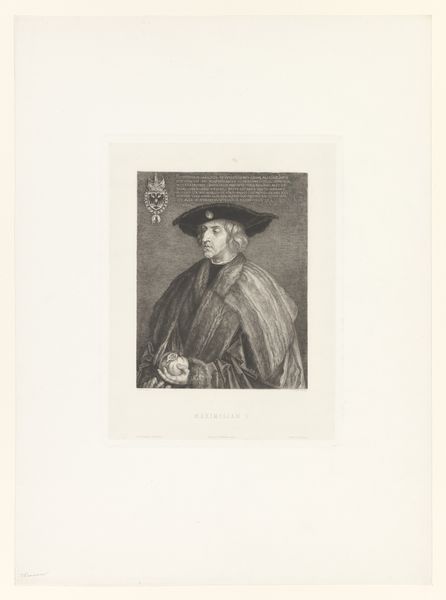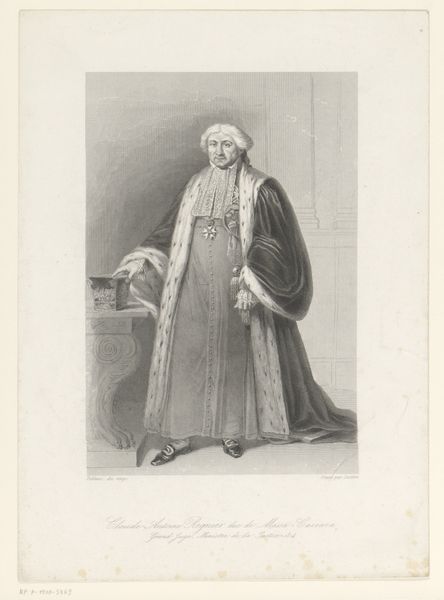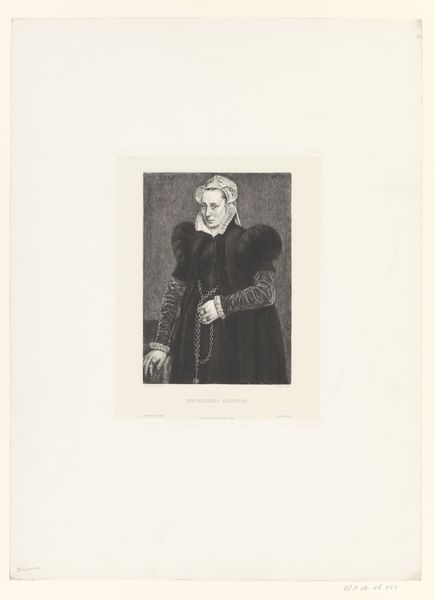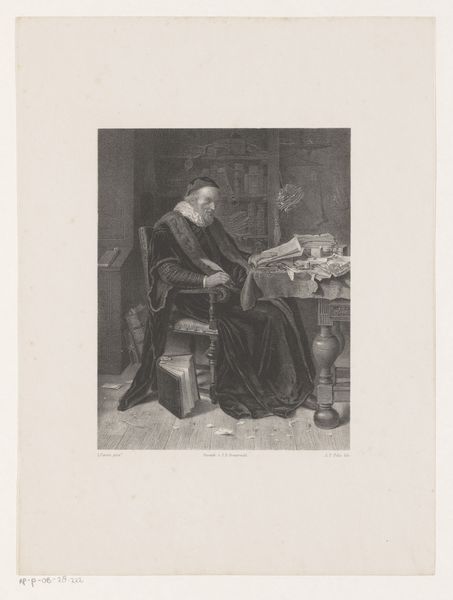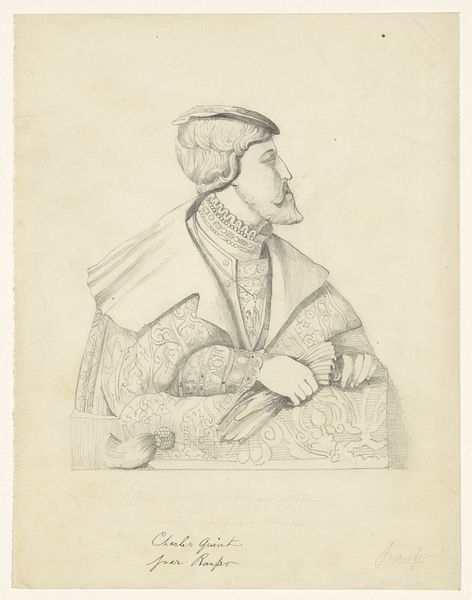
Dimensions: height 447 mm, width 336 mm
Copyright: Rijks Museum: Open Domain
Curator: Oh, what a melancholic scene. It just drips with the lonely artist trope, doesn’t it? Editor: Indeed. We are looking at "Cellist by a Window," created in 1858 by August Allebé. The Rijksmuseum houses this graphite engraving, a beautiful example of romantic portraiture. Curator: Graphite, huh? The level of detail with simple graphite is astonishing. You’ve got the window panes, each painstakingly rendered, reflecting who knows what kind of grey world outside, all that careful hatching. And then the cellist himself – his longing gaze is just… palpable. It is quite something, no? Like a snapshot of yearning set down with lead. Editor: Precisely. Note the structural juxtaposition; the window acts as a rigid grid, framing the fluid lines of the musician and his instrument. The contrast invites a semiotic reading—confinement versus freedom, perhaps? Curator: Or maybe he's just waiting for the rain to stop! Jokes aside, I find his face quite telling, its so delicately rendered. You see the subtle gradations of tone, those delicate lines around his eyes—makes him seem utterly human and approachable, despite the era. A far cry from those stiff, powdered portraits of the elite. Editor: Good point, the romantic artists looked within. Notice the absence of vibrant colour redirects our attention to form, line, and composition, emphasising the subject's pensive mood. The engraver, probably following the artist, brilliantly captured textures: the glossy cello, the soft drape of his robe, all in monochrome. Curator: I agree; Allebé lets us glimpse the interior life of the musician rather than an ostentatious display of wealth. And for me, it’s about the music too; "Adagio con espressione," proclaims the bottom of the print, and it totally lands, even without hearing a note. Editor: This reading of “longing” resonates through these elements but can be amplified through period considerations too. Given the rise of nationalism in 19th-century Europe, artworks often sought to inspire emotionality to promote values of home and country through intimate scenes and the idealization of the sitter. Curator: Right? And with that in mind, a humble graphite engraving can hold the weight of the world. It's as much an archive of the past and snapshot of an emotion as it is simply about tones and shades and what you can capture with light on paper. Editor: So very well said, it prompts us to examine the dialogue between form and feeling, doesn't it? A simple print that sparks quite a bit, doesn’t it?
Comments
No comments
Be the first to comment and join the conversation on the ultimate creative platform.
